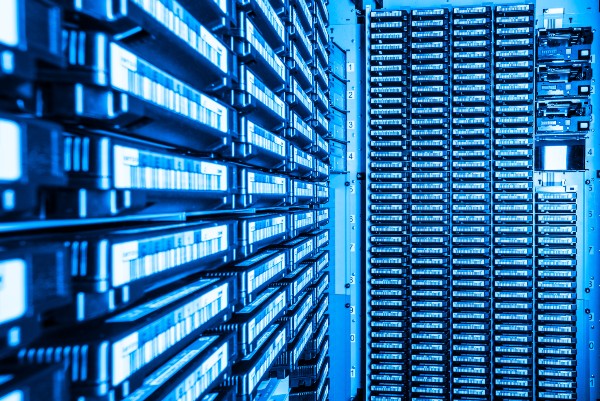Elevate the power of your work
Get a FREE consultation today!
Implementing a circular framework in data center operations requires constantly looking for ways to extend asset life to support sustainability and business goals. These tips can help you make the most of your resources.

As our reliance on digital infrastructure for everything from delivering TV shows to orchestrating missions to Mars increases, so does the need for data center capacity. Structure Research expects the global data center colocation and interconnection market to grow 13.5% annually to $136.8 billion in 2028. That will drive corresponding growth in IT equipment and power.
That makes circularity - an operating model that reduces resource consumption and waste by promoting more efficient use of materials - a core principle of data center operations. The argument is compelling: Data centers produce an estimated 11.8 metric tons of electrical and electronic equipment waste per year, according to the Circular Economy for the Data Center Industry. Twenty-three of the 30 critical raw materials deemed by the European Commission to be in short supply globally are used in server, storage, and networking equipment. Less than 20% of IT waste is recycled, creating a growing environmental, health, and economic problem.
Implementing a circular framework in data center operations requires constantly looking for ways to extend asset life to support sustainability and business goals. These tips can help you make the most of your resources.
Overprovisioning IT equipment wastes energy, consumes floor space, and requires staffing to maintain underutilized or unused assets. Estimate your current capacity and future expansion needs and budget accordingly, acquiring equipment only when needed.
Choose energy-efficient hardware that promises long life spans to reduce the need for frequent replacements. Modular design can play a significant role here, allowing component upgrades and repairs rather than replacing an entire system. Prefabricated modular data centers, built separately and assembled as needed, are scalable solutions that can be quickly deployed and removed as capacity demands.
Virtualization is a powerful technology that optimizes resource use. It allows multiple virtual assets to occupy a single physical space. Servers, storage, and networking equipment can all be virtualized. This technology reduces the need for physical hardware, lowers energy consumption, and reduces e-waste. Data storage optimization techniques like data deduplication, compression, and moving little-used data to offline media like tape or optical storage also lessen the need for physical storage devices.
Consider repairing or refurbishing equipment instead of replacing it and implement an asset tracking system to monitor equipment lifecycles and identify opportunities for reuse or recycling.
Dust, humidity, and heat are the enemies of IT assets. They shorten equipment lifespans and jeopardize production by causing unforeseen outages. Invest in air filtration systems and use innovative heat management techniques like evaporative cooling, hot aisle/cold aisle containment, and direct-to-chip cooling. The rewards are longer equipment life and reduced energy needs.
When purchasing equipment, choose vendors that offer lifecycle management services and support circular product practices. Most major vendors publish detailed reports on their circularity initiatives. Regulations may also require vendors in some regions to provide repair, refurbishment, and environmentally responsible disposal.
Disposing of IT assets should be a last resort. Repurpose servers for less demanding tasks, such as serving files or acting as a network firewall, when possible. Equipment that cannot be reused within the organization may be wiped and resold or donated to others.
Refurbishment is another option. When equipment reaches the end of its life, professional data wiping and refurbishing firms can restore it to its original specifications and offer it for resale. Purchasing refurbished equipment supports circular principles and often provides excellent value.
Retired equipment may also be disassembled, and the parts may be reused and resold. This is known as parts harvesting. Professional IT asset management firms specialize in finding buyers for harvested components.
When disposal is the only option, certified ITAD providers who adhere to environmentally sound practices, ensure that materials are responsibly processed and recycled.
Numerous software tools can support circularity. Data center infrastructure management (DCIM) software combines IT and facilities management to provide a complete view of a data center's operations, enabling optimal use of energy, equipment, and space. DCIM helps in physical architecture planning, rack design optimization, materials cataloging, hardware change management, capacity planning and predictive maintenance.
A computerized maintenance management system (CMMS) centralizes information and streamlines maintenance operations through work order management, preventive maintenance scheduling, inventory management, and comprehensive reporting.
An IT asset lifecycle management process ensures that an organization's IT assets are tracked, managed, and maintained effectively throughout their lifespan. It maximizes utility through everything from planning and procurement to deployment, maintenance, redeployment, and eventual retirement or disposal.
Technology solutions still in the labs or in early stages of deployment include intelligent sensors for environmental monitoring, artificial intelligence-enabled maintenance scheduling, and three-dimensional printing of IT assets on demand.
Transitioning to a circular framework for data center operations is a complex but rewarding endeavor. It is environmentally responsible and yields economic benefits through improved efficiency and reduced operational costs. This contributes to investor confidence, regulatory compliance and progress toward your organization’s sustainability goals.
Get a FREE consultation today!
